| Equation | (# children) x (Q1: Improvement in externalizing behavior due to the intervention) x (Q2: Impact of externalizing behavior on high school graduation) x ($ difference in lifetime earnings for high school graduates vs. no high school completion) |
| Explanation | This metric estimates the impact of home visiting programs on improved externalized behavior leading to increases in academic achievement on increased lifetime earnings It should only be used for programs with a specific or primary goal of improving the behavior or mental health of children. This metric is based on a meta-analysis of the impact of a wide array of home visiting programs including the following: Healthy Families America (HFA), Family Check Up for Children, Nurse-Family Partnership (NFP), Parents as Teachers (PAT), Triple P – Positive Parenting Program®—Variants suitable for home visiting, Family Spirit, Child First, Home Instruction for Parents of Preschool Youngsters (HIPPY), Early Head Start–Home-Based Option (EHS-HBO), Play and Learning Strategies (PALS). These programs serve children from birth through age 17, and mothers or expectant mothers. If the organization works with a specific home-visiting model, the particular effect sizes of that program model will be used. Number of children: Reported by program. Q1: Improvement in externalizing behavior due to the intervention: [-0.022 preschool children; -0.038 school-age children]. This is estimated by Constellation staff using the following formula: Q2: Impact of externalizing behavior on high school graduation: [-0.079]. This is estimated by Constellation staff using the following formula: Difference in lifetime earnings between high school graduates vs. no high school completion: [$198,700]. This is computed using ACS data (U.S. Census Bureau, 2016). These benefits are already discounted to present value. |
| References | Baker, A. J. L., & Piotrkowski, C. S. (1996). Parents and children through the school years: The effects of the home instruction program for preschool youngsters. New York: National Council of Jewish Women, Center for the Child. Barlow, A., Mullany, B., Neault, N., Compton, S., Carter, A., Hastings, R., Billy, T., CohoMescal, V., Lorenzo, S., & Walkup, J. T. (Jan 2013). Effect of a paraprofessional home-visiting intervention on American Indian teen mothers’ and infants’ behavioral risks: A randomized controlled trial. The American Journal of Psychiatry, 170(1), 83-93. Barlow, A., Mullany, B., Neault, N., Goklish, N., Billy, T., Hastings, R., … Walkup, J. T. (2015). Paraprofessional-delivered home-visiting intervention for American Indian teen mothers and children: 3-Year outcomes from a randomized controlled trial. American Journal of Psychiatry, 172(2), 154-162. Caldera, D., Burrell, L., Rodriguez, K., Crowne, S. S., Rohde, C., & Duggan, A. (2007). Impact of a statewide home visiting program on parenting and on child health and development. Child Abuse & Neglect, 31(8), 829–852. doi:10.1016/j.chiabu.2007.02.010 Enoch, M. A., Kitzman, H., Smith, J. A., Anson, E., Hodgkinson, C. A., Goldman, D., & Olds, D. L. (2016). A prospective cohort study of influences on externalizing behaviors across childhood: Results from a nurse home visiting randomized controlled trial. Journal of the American Academy of Child and Adolescent Psychiatry, 55(5), 376–382. Gardner, F., Connell, A., Trentacosta, C. J., Shaw, D. S., Dishion, T. J., & Wilson, M. N. (2009). Moderators of outcome in a brief family-centered intervention for preventing early problem behavior. Journal of Consulting and Clinical Psychology, 77(3), 543–553. Landry, S. H., Smith, K. E., & Swank, P. R. (2006). Responsive parenting: Establishing early foundations for social, communication, and independent problem-solving skills. Developmental Psychology, 42(4), 627-42. Landsverk, J., Carrilio, T., Connelly, C. D., Ganger, W., Slymen, D., Newton, R., et al. (2002). Healthy Families San Diego clinical trial: Technical report. San Diego, CA: The Stuart Foundation, California Wellness Foundation, State of California Department of Social Services: Office of Child Abuse Prevention. Lowell, D. I., Carter, A. S., Godoy, L., Paulicin, B., & Briggs‐Gowan, M. J. (2011). A randomized controlled trial of Child FIRST: A comprehensive home‐based intervention translating research into early childhood practice. Child development, 82(1), 193-208. Minnesota Department of Human Services. (2018). Children’s mental health: Transforming services and supports to better meet children’s needs (No. DHS-5051-ENG) (p. 2). Minnesota Office of Higher Education. (2017). Graduation rates: Graduation and retention rates of undergraduates in Minnesota’s postsecondary institutions. Retrieved from https://www.ohe.state.mn.us/mPg.cfm?pageID=754 Olds, D. L., Kitzman, H., Cole, R., Robinson, J., Sidora, K., Luckey, D. W., et al. (2004). Effects of nurse home-visiting on maternal life course and child development: Age 6 follow-up results of a randomized trial. Pediatrics, 114(6), 1550–1561 Pfannenstiel, J. (2015). Evaluation of the i3 validation of improving education outcomes for American Indian children. Unpublished manuscript. Overland Park, KS: Research & Training Associates, Inc. Roggman, L., Boyce, L. K., & Cook, G. (2009). Keeping kids on track: Impacts of a parenting-focused Early Head Start program on attachment security and cognitive development. Early Education & Development, 20(6) 920-942 Sanders, M. R. & Glynn, T. (1981). Training parents in behavioral self-management: An analysis of generalization and maintenance. Journal of Applied Behavior Analysis, 14(3), 223-223. Shaw, D. S., Connell, A., Dishion, T. J., Wilson, M. N., & Gardner, F. (2009). Improvements in maternal depression as a mediator of intervention effects on early childhood problem behavior. Development and Psychopathology, 21, 417–439. U.S. Census Bureau. (2016). American Community Survey 5-year estimates – public use microdata sample, 2012-2016. Generated using Public Use Microdata Area (PUMA) in the Seven-county Twin Cities Metropolitan Area. Walkup, J. T., Barlow, A., Mullany, B. C., Pan, W., Goklish, N., Hasting, R., Cowboy, B., Fields, P., Baker, E. V., Speakman, K., Ginsburg, G., Reid, R. (2009). Randomized controlled trial of a paraprofessional-delivered in-home intervention for young reservation-based American Indian mothers. Journal of the American Academy of Child & Adolescent Psychiatry, 48(6), 591-601. Washington State Institute for Public Policy. (2019). Benefit-cost technical documentation. Olympia, WA: Author. Retrieved from: http://www.wsipp.wa.gov/TechnicalDocumentation/WsippBenefitCostTechnicalDocumentation.pdf |


